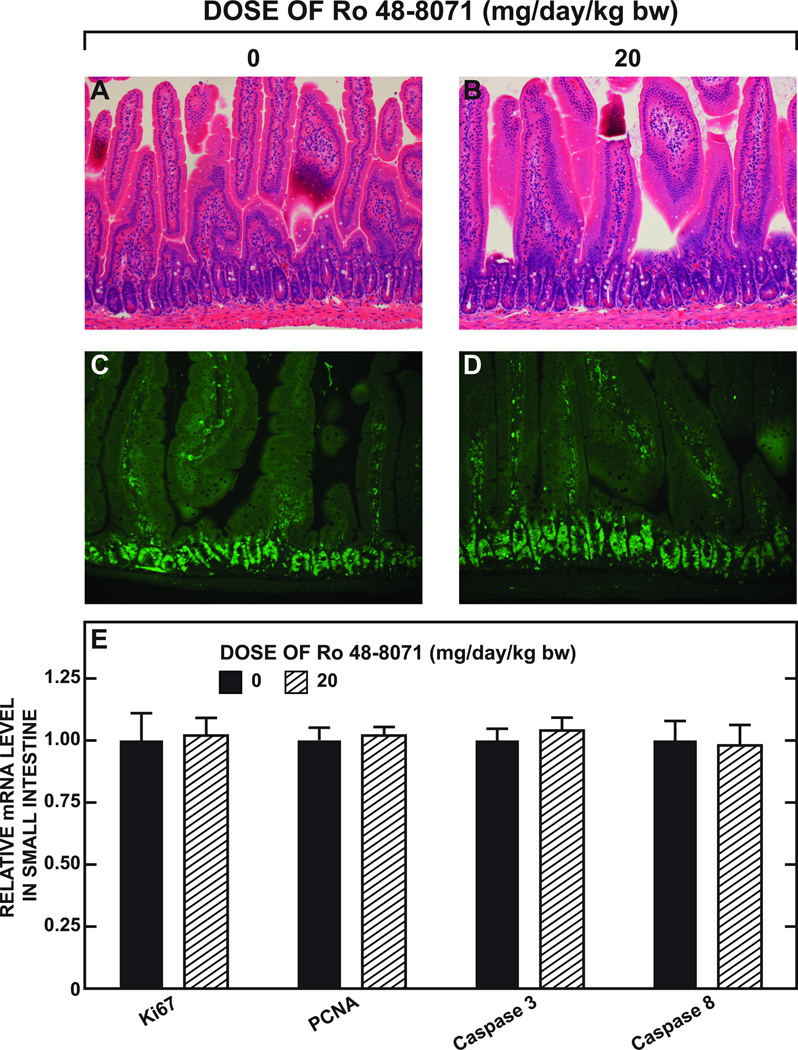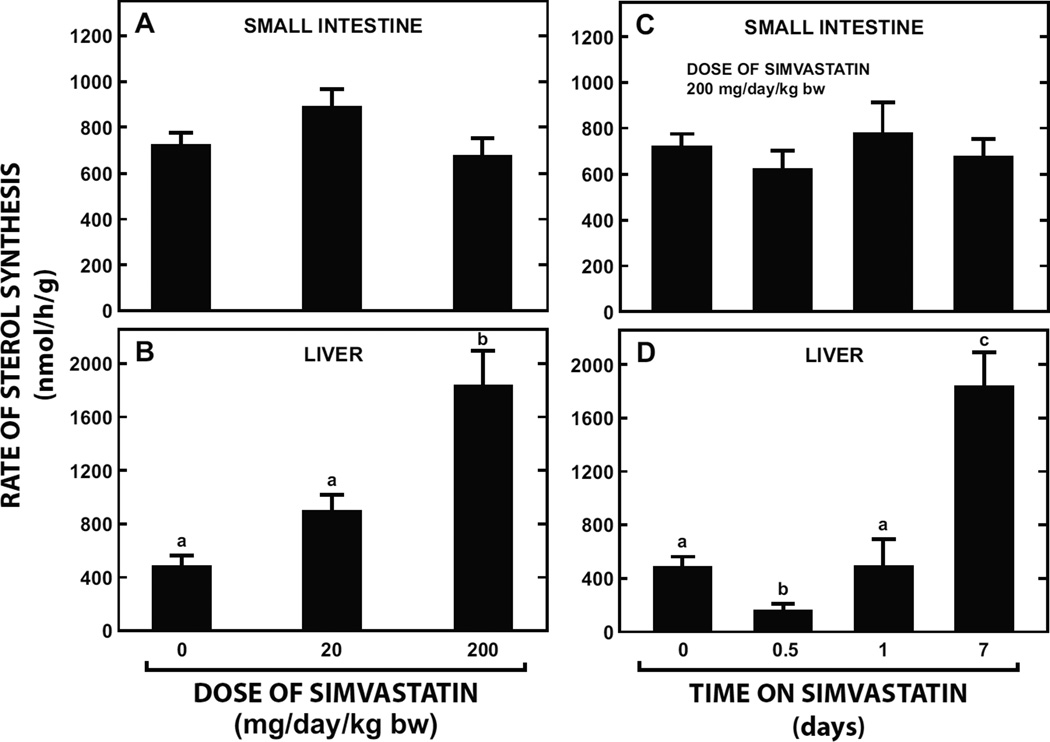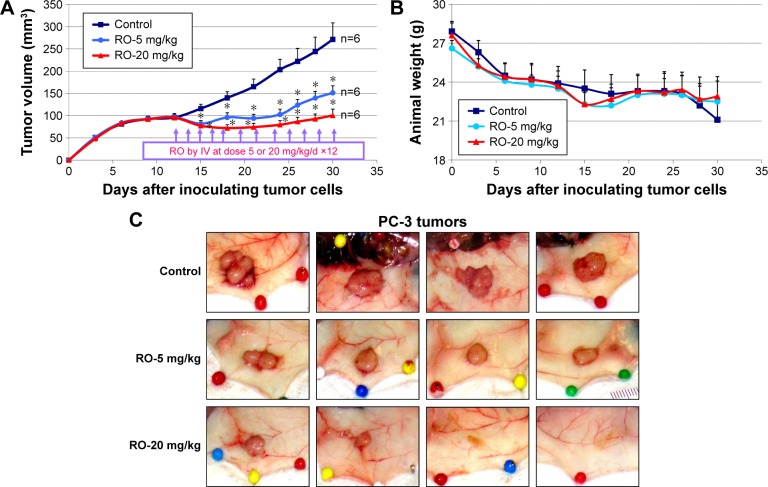This product is for research use only, not for human use. We do not sell to patients.

| Size | Price | Stock |
|---|---|---|
| 5mg | $50 | 3-6 Days |
| 10mg | $70 | 3-6 Days |
| 25mg | $100 | 3-6 Days |
| 50mg | $150 | 3-6 Days |
| 100mg | $250 | 3-6 Days |
| 250mg | $450 | 3-6 Days |
| 500mg | $750 | 3-6 Days |
Cat #: V2955 CAS #: 189197-69-1 Purity ≥ 98%
Description: Ro 48-8071 fumarate is an orally bioavailable inhibitor of OSC (Oxidosqualene cyclase) with IC50 of ~6.5 nM. OSC represents a new and unique target for cholesterol-lowering drugs. In addition, Ro 48-8071 has shown anticancer activity, at 10 μM, it significantly reduces the viability of PC-3 prostate cancer cells, but not normal prostate cells. Ro 48-8071 (10-30 μM) induces apoptosis of both LNCaP and C4-2 cell lines in a dose-dependent manner. And castration-resistant PC-3 and DU145 cells also demonstrate significant levels of apoptosis following 24-hour treatment with Ro 48-8071.
Publications Citing InvivoChem Products
Product Promise

- Physicochemical and Storage Information
- Protocol
- Related Biological Data
- Stock Solution Preparation
- Quality Control Documentation
| Molecular Weight (MW) | 564.44 |
|---|---|
| Molecular Formula | C27H31BrFNO6 |
| CAS No. | 189197-69-1 |
| Storage | -20℃ for 3 years in powder form |
| -80℃ for 2 years in solvent | |
| Solubility In Vitro | DMSO: ≥ 55 mg/mL |
| Water: <1 mg/mL | |
| Ethanol: <1 mg/mL | |
| Solubility In Vivo | O=C(C1=CC=C(OCCCCCCN(CC=C)C)C=C1F)C2=CC=C(Br)C=C2.O=C(O)/C=C/C(O)=O |
| Synonyms | Ro 488071; Ro488071; Ro-488071; Ro 48-8071 fumarate |
| Protocol | In Vitro | In vitro activity: Ro 48-8071 (10 μM) significantly reduces the viability of PC-3 prostate cancer cells, but not normal prostate cells. Ro 48-8071 (10-30 μM) induces apoptosis of both LNCaP and C4-2 cell lines in a dose-dependent manner. And castration-resistant PC-3 and DU145 cells also demonstrate significant levels of apoptosis following 24-hour treatment with Ro 48-8071. Ro 48-8071 (10-25 μM) reduces AR protein expression in a dose-dependent manner. Ro 48-8071 (0.1-1 μM) increases ERβ protein expression dose-dependently in both hormone-dependent LNCaP and castration-resistant PC-3 cells.Using mammalian cells engineered to express human ERα or ERβ protein, together with an ER-responsive luciferase promoter, Ro 48-8071 dose-dependently inhibits 17β-estradiol (E2)-induced ERα responsive luciferase activity (IC50, appr 10 µM), under conditions that are non-toxic to the cells Kinase Assay: Ro 48-8071 is an inhibitor of OSC (Oxidosqualene cyclase) with IC50 of appr 6.5 nM. Cell Assay: In HepG2 cells, Ro 48-8071 reduces cholesterol synthesis dose dependently with an IC50 value of appr 1.5 nM. Ro 48-8071 (10 μM) significantly reduces the viability of PC-3 prostate cancer cells, but not normal prostate cells. Ro 48-8071 (10-30 μM) induces apoptosis of both LNCaP and C4-2 cell lines in a dose-dependent manner. And castration-resistant PC-3 and DU145 cells also demonstrate significant levels of apoptosis following 24-hour treatment with Ro 48-8071. Ro 48-8071 (10-25 μM) reduces AR protein expression in a dose-dependent manner. Ro 48-8071 (0.1-1 μM) increases ERβ protein expression dose-dependently in both hormone-dependent LNCaP and castration-resistant PC-3 cells. Using mammalian cells engineered to express human ERα or ERβ protein, together with an ER-responsive luciferase promoter, Ro 48-8071 dose-dependently inhibits 17β-estradiol (E2)-induced ERα responsive luciferase activity (IC50, appr 10 µM), under conditions that are non-toxic to the cells. |
|---|---|---|
| In Vivo | Ro 48-8071 lowers LDL-C maximally appr 60% at 150 μmol/kg per day, with no further reduction up to 300 μmol/kg per day, leaving HDL-C unchanged at all doses in hamsters. Ro 48-8071 (≥00 μmol/kg per day) increases the amount of MOS in liver of hamsters. Ro 48-8071 (300 μmol/kg per day) remarkedly and significantly reduces VLDL secretion of hamsters. Ro 48-8071 (5 or 20 mg/kg) significantly reduces in vivo tumor growth in mice, without weight loss of the mice. Furthermore, Ro 48-8071 at a concentration of 20 mg/kg, completely eradicates two of the 12 tumors being monitored in the mice in the timeframe tested.Ro 48-8071 (20 mg/day/kg body weight) leads to a rapid and sustained inhibition (>50%) of cholesterol synthesis in the whole small intestine of BALB/c mice. Sterol synthesis is also reduced in the large intestine and stomach. | |
| Animal model | BALB/c mice |
| Solvent volume to be added | Mass (the weight of a compound) | |||
|---|---|---|---|---|
| Mother liquor concentration | 1mg | 5mg | 10mg | 20mg |
| 1mM | 1.7717 mL | 8.8583 mL | 17.7167 mL | 35.4333 mL |
| 5mM | 0.3543 mL | 1.7717 mL | 3.5433 mL | 7.0867 mL |
| 10mM | 0.1772 mL | 0.8858 mL | 1.7717 mL | 3.5433 mL |
| 20mM | 0.0886 mL | 0.4429 mL | 0.8858 mL | 1.7717 mL |
This equation is commonly abbreviated as: C1 V1 = C2 V2
- (1) Please be sure that the solution is clear before the addition of next solvent. Dissolution methods like vortex, ultrasound or warming and heat may be used to aid dissolving.
- (2) Be sure to add the solvent(s) in order.







































